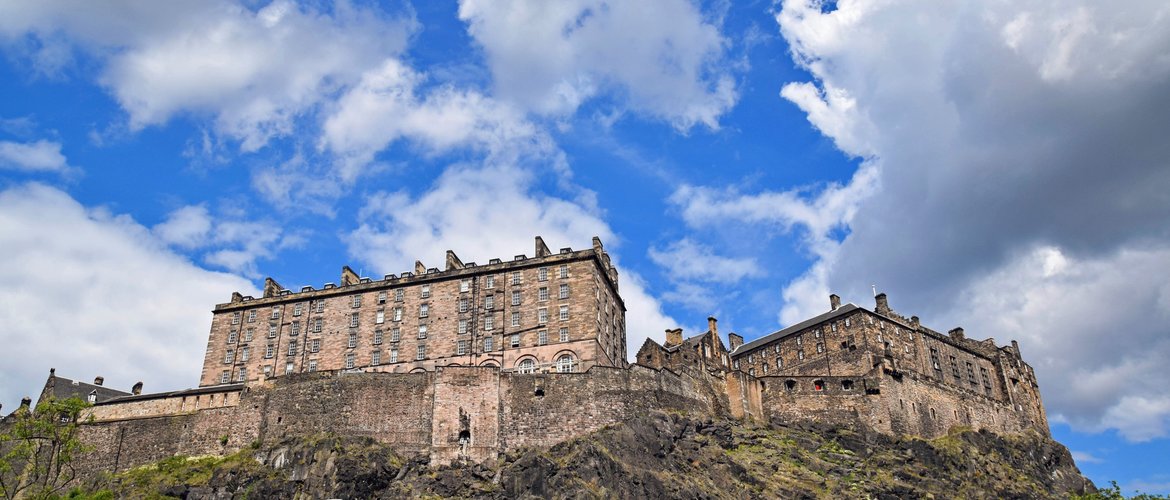
There are many interesting castles to visit near Edinburgh, so if you have the chance, go and visit them. Following is a list of castles in Edinburgh and The Lothians area. From £28 you can buy the Explorer Pass that gives you access to all attractions. For more details visit Historic Scotland website.
Edinburgh Castle
Edinburgh Castle is the most visited attraction in Scotland. A fortress on top of an extinct volcano that was once the residence of Scottish kings and queens, it’s now considered without doubt a must see attraction. It’s home to the Stone of Destiny, Scotland’s crown jewels, the National War Memorial, the Prisons of War exhibition – among others. It’s open all year round except Christmas day and Boxing Day. It takes around 2 hours to see the major attractions within the castle so it’s better to come in the morning and finish with a light meal at one of their cafés.
Blackness Castle
It was built in the 15th century by the Crichtons, one of Scotland’s most powerful families. In 1453 it became a royal castle due to its strategic position on the Firth of Forth. One of the most beautiful views from the towers to the Forth.
Craigmillar Castle
It’s one of the best preserved medieval castles in Scotland. The tower house, which is the core of the castle, dates from the late 14th century.
It hosted Mary Queen of Scots. You can visit the Queen Mary’s Room where Mary is said to have slept. The views from the tower are stunning!
Some great dark and mysterious chambers to explore. The basement prison is one of the darkest areas of the castle, where an upright skeleton was found in the early 19th century.
The courtyard and gardens are of equal importance.
Crichton Castle
Built in the late 14th century as a home for the Crichtons and was a noble residence for around 200 years. In 1484 it became home to the Earls of Bothwell. James, the 4th Earl was the third husband of Mary Queen of Scots.
Its location overlooking the River Tyne, its 14th century tower house, the Great Hall and the beautiful façade are the highlights of this castle.
Dirleton Castle and Gardens
Built in the 13th century. For the first 400 years, it was the residence of three successive noble families. In 1650, the siege by Oliver Cromwell’s soldiers severely damaged the castle.
The garden, a blend of traditional and contemporary plantings, dates from the late 19th and early 20th century.
Linlithgow Palace
Once the royal palace of the Stewarts, today only ruins. Its construction dates from 1424 in a strategic location between Edinburgh Castle and Stirling Castle.
It served as the royal nursery for James V (born 1512), Mary Queen of Scots (born 1542) and Princess Elizabeth (born 1596).
The palace fell into decline after 1603 when James VI moved the royal court to London. A fire in 1745 marked the end of the castle. Some of the highlights are the 15th century St Michael’s Kirk, the loch (lake) and gardens beside it, the fountain in the centre of its courtyard and the stone-carved sculptures.
Walking around the loch takes around 45 minutes and should be part of the visit as the visitor will have great views of the palace.
Tantallon Castle
It was built in the 14th century atop of cliffs on the Firth of Forth. For 300 years it was home to one of the most powerful families in Scotland, the earls of Angus.
It endured three great sieges, the last in 1651, by Oliver Cromwell’s army left the castle destroyed and abandoned. The highlights are its beautiful location, the stone curtain wall, the wildlife of the area and the replica gun (an exact reproduction of the gun used to defend the castle against James IV in 1491 and James V in 1528.
Some great dark and mysterious chambers to explore. The basement prison is one of the darkest areas of the castle, where an upright skeleton was found in the early 19th century.
Share on social media